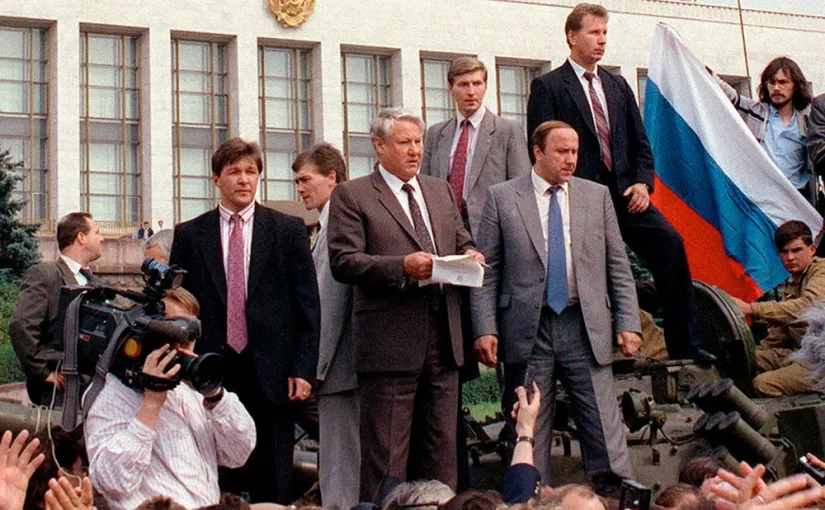After the fall of the Berlin wall and the reunification of Germany, many Eastern Bloc countries began democratic reforms. One election in Bulgaria and two revolutions in Czechoslovakia and Romania later and the Soviet Grasp of the East had loosened. This was part of a large anti-Communist sentiment that eventually found its way to Moscow.
People began protesting against the One Party System that had governed the Soviet Union. Eventually, Gorbachev conceded and allowed the first ever democratic election in Russia. Liberalist Boris Yeltsin came out on top as President of Russia. However, during a feud about who really controlled the nation, as Gorbachev was still technically in charge of the states that made up the Soviet Union, a group of Communist hardliners abducted Gorbachev and attempted to seize power.
They attempted to take control of the government by barricading themselves in the Russian Parliament building called the White House. Eventually, Russian Soldiers built a barricade and, after some small gunfights between the two groups, the hardliners eventually surrendered Gorbachev and their control of the government.

Gorbachev was released. However, Yeltsin had now seized all the power, freeing all the other states that made up the Soviet Union, like Georgia, Ukraine and Belarus, thus dissolving the Soviet Union in December of 1991. Democracies were established in all the former states, and the threat of mutually assured nuclear destruction never came up again. Right?
